
Early Years Tipi Teachings
Resources by Tipi Pole Value
- Subject:
- Indigenous Perspectives
- Social Studies
- Treaty Education
- Material Type:
- Activity/Lab
- GAP 4
- GAP 5
- GAP 6
- Author:
- SRPSD
- Date Added:
- 02/28/2023
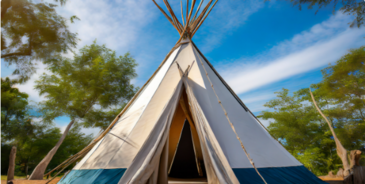
This collection features lessons and units for FNME.

Early Years Tipi Teachings
Resources by Tipi Pole Value
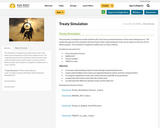
This simulation is designed to provide students with a first hand, personal experience of the treaty making process. The insight they gain from this simulation will assist them in their understanding of treaty and its impact on the lives of First Nation peoples. This simulation is targeted at middle years to senior students.
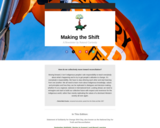
"Making the Shift" is a monthly newsletter by Natural Curiosity. The September 2022 edition features lots of information and activities related to Truth and Reconciliation.
A few of the Educator Resources include:
- Orange Shirt Day Resources
- National Centre for Truth and Reconciliation Residential School Resources
- Truth & Reconciliation Discussion Guide from Scholastics Canada
- Take Me Outside Indigenous Resources
- Residential School Survivor Stories
- And much more!

This Curriculum-based Educational Bundle includes:
- Walking With Miskwaades
- Walking With A’nó:wara
- TURTLE ISLAND CONSERVATION Miskwaadesi and A’nó:wara CURRICULUM-BASED ACTIVITIES GUIDE
Toronto Zoo's Turtle Island Conservation programme (TIC) respectfully shares the hopes and goals of First Nation partners in our committment to the preservation of biodiversity. TIC partners with First Nation communities to preserve community knowledge and significant natural and cultural landscapes.
For students and teachers grades 1 to 6.

The CLS(Canadian Light Source), in Saskatoon, SK, is located on Treaty Six land in the traditional territories of the Nêhiyawak (Cree), Anishinabek, Lakota, Dakota and Nakota Nations, and the homeland of the Métis. As educators, we respect Indigenous Ways of Knowing and oral traditions. We dedicate ourselves to moving forward in the spirit of partnership, reconciliation, and collaboration.
The Virtual Classroom was created to have an accessible learning platform that students and educators from across Canada and the globe, especially those in remote areas, can engage with our learning activities and resources. We want to provide the opportunity for every student to learn and connect to science contexts, whether in their classroom, in the lab, at their home, or here, in the virtual classroom
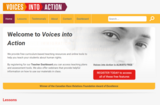
Free curriculum- based resources and online tools for teaching human rights.

This guide is a teacher resource containing several classroom activities that explore the stories shared in the Voices from Here video series. Download the education guide and use the worksheets

Download Unit Plans that include lessons and classroom activities.
The themes include:
What is Indigenous Knowledge?
What is Historical Consciousness?
What is Evidence and How Do We Use It?
Cultural Expressions of the Canoe
Colonialism and the Canoe
Canoes and Ancient Civilizations
Mapping
Oral Tradition and the Canoe
Origin Stories and the Canoe
Resources and the Canoe
Witnesses to BC History: Evaluating Primary Sources
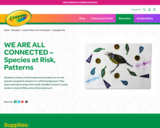
Students create a mixed media artwork about an at-risk species using black shapes on a white background. They paint each black shape with small, beadlike circles in a style similar to that of Métis artist Christi Belcourt.

This lesson is an experiential approach to Indigenous people’s history.
Grade Levels: 9/10, 11/12
Subject Area: First Nations, Métis and Inuit, Social Studies, History, Language Arts, Art, Social Justice
The module consists of learning material that is delivered through an Indigenous pedagogical approach. There is extensive context-setting in the form of introductory activities (talking circles, guest speakers, a field-trip to a museum) to front-load the main activity, which is literally, walking (and learning) on the lands of Indigenous people’s ancestors. The location of this “learning on the land” is situated in the Victoria School District, British Columbia, but the module can be applied in any territory in Canada provided proper protocols with respect to working with the Indigenous nation on whose land the school is situated, are established first. Anne Tenning models how teachers can use an Indigenous approach to teaching social studies. A possible outcome in so-doing, is that other disciplinary inquiries may be addressed simultaneously. Ms. Tenning also uses “real life” examples to illustrate how deeply students are impacted by Indigenous guest speakers, and she uses student testimonials as evidence. Ms. Tenning uses a first person narrative to explain how she conducts her classes.

The Sacred Relationship brings Aboriginal worldview right into your classroom and community. Download easy-to-teach lesson plans based on series of fifteen educational videos. The videos feature perspectives on water from Aboriginal Elders, leaders and Western Scientists.
Contact us and get access to the curriculum
Teachers across Canada can log in free of charge and get access to:
Grade 5 Science – Wetland Eco-Systems
Eleven Lesson Plans
Six Online Videos
Grade 5 Social Studies – Histories and Stories of Ways of Life in Canada
Four Lesson Plans
Four Online Videos
Grade 6 Science – Evidence and Investigation
Three Lesson Plans
Three Online Videos
Grade 6 Social Studies – Citizens Participating in Decision Making
One Lesson Plan
One Online Video
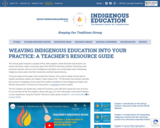
The First Nations University, Indigenous Continuing Education Centre (ICEC), is proud to offer an exclusive tutorial introducing the National Centre for Collaboration in Indigenous Education (NCCIE) website and its on-line Teaching Resource Centre for Indigenous and non-Indigenous educators. The Teaching Resource Centre is an invaluable tool for all educators. The lesson plans are searchable by subject and grade. Each lesson plan comes complete with learning outcomes, a teacher’s guide,
activities, assessment guidelines, and materials. Lesson plans and videos were co-developed with community partners across Canada in the spirit of reciprocity – to contribute to the growing educational resources that highlight Indigenous perspectives.
The tutorial is designed to highlight the educational videos, stories, and lessons available on the NCCIE website and support learners and educators in their journey of knowing and understanding Indigenous education.
The tutorial will:
• Describe where to locate useful educational resources (e.g., videos, stories, and lessons) on the NCCIE website.
• Identify resources that may be useful in your educational journey or in your teaching practice.
• Examine and implement a variety of website resources into your courses and contexts.
• Assess the support you may need to deliver website content.
• Design a plan for implementing resources from the NCCIE website.
Topics include:
- Resource Guide Overview
- History of the NCCIE (The National Centre for Collaboration in Indigenous Education
- Integrating Indigenous Content into the Classroom
- Navigating the NCCIE Website
- Four Directions Model for Indigenous Education
- Using a Medicine Wheel in the Classroom
- Integrating Indigenous Content into the Classroom
- Relationship-Building with Indigenous Communities
- Adaptations of lessons to different provincial curricula

The following is a collection of webinars to support teachers with using the NFB's Campus Resource that is currently avaiable free in SK. "Established in 2012, CAMPUS is a subscription service that offers expanded online access to NFB educational resources—a collection that includes films, interactive productions and teaching tools. The service allows users to create their own classroom-ready playlists and chapters.Benefits include online access to thousands of educational films, a growing collection of educational interactive productions, and an extensive bank of teaching resources. These resources include study guides, thematic playlists, and notes on appropriate grade levels and curriculum. Subscribers are able to create their own classroom-ready playlists and chapters"
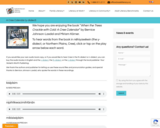
Hear words from the book in nēhiyawēwin
These activity sheets are from the book “When the Trees Crackle with Cold: A Cree Seasons Activity Book” by Bernice Johnson-Laxdal and Miriam Körner. We thank them for their permission to share these activities with you for Family Literacy Day in Saskatchewan!
Story Questions
Read and Find Activity Sheets
Look and Find Activity Sheets

The University of Regina Press has made a number of excellent resources available online for open access. These resources, developed by Jean Okimâsis include a grammar guide, a workbook, and links to audio resources.
The resource include:
- a grammar guide, available as a PDF for download
- a link to the Language Lab user guide
- a Language Lab Workbook
- a Soundcloud link to Cree Language of the Plains audio sessions
- an Open Access link to a page that has all the above resources available in different formats.
Jean Okimâsis and Arok Wolvengrey also wrote a fantastic resource “How to Spell it in Cree“, which you can download as a PDF. It lays out the rules of a standardized written Cree, but also does important work of addressing the criticisms of standardization. It challenges the notion that we can ever use English to ‘phonetically’ represent the Cree language, champions a specific orthography for Cree, and describes how standardization, rather than destroying or degrading the language, will help ensure Cree continues to survive.